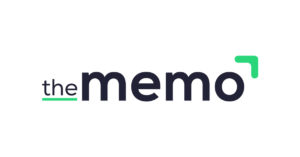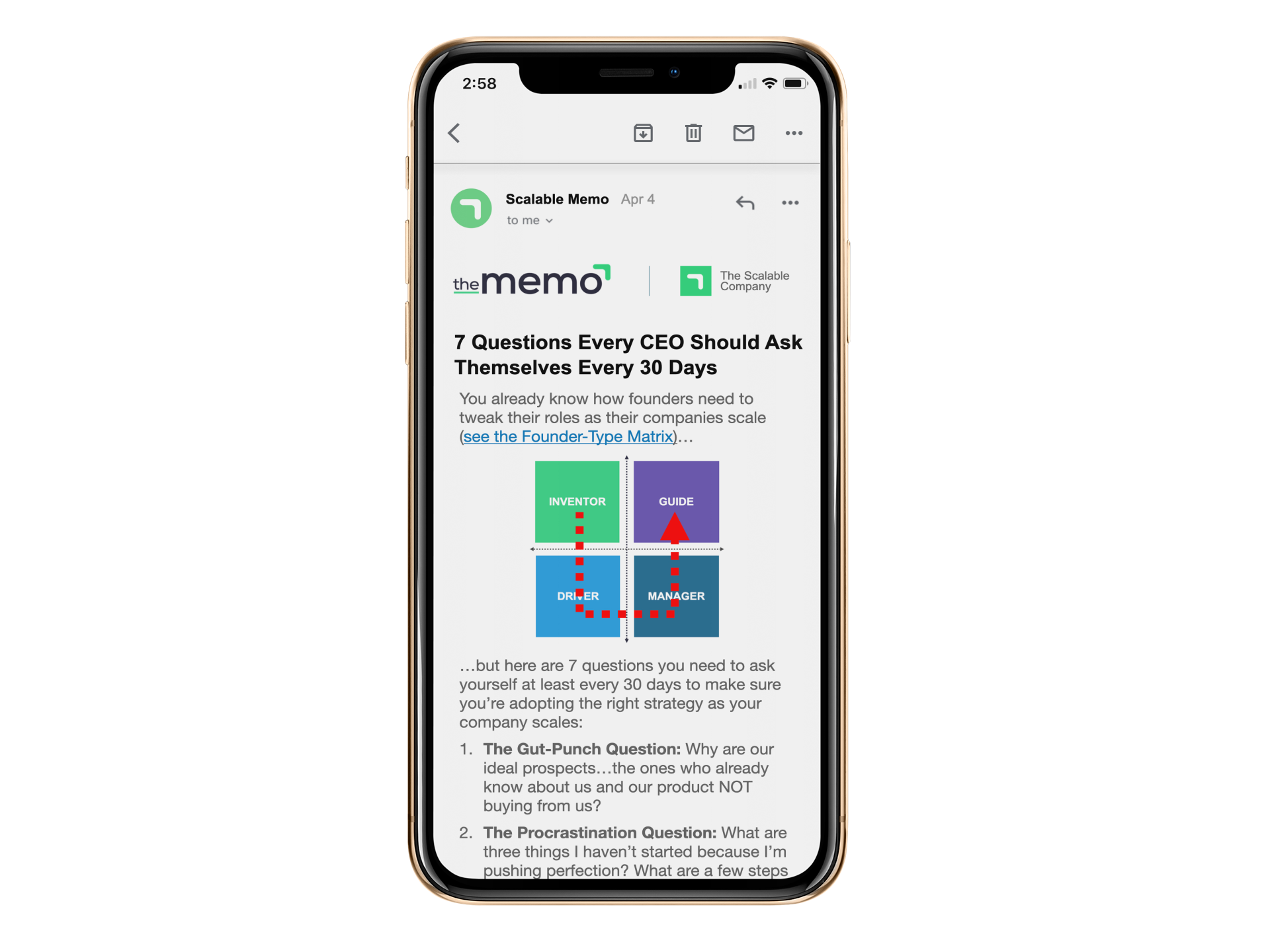New to The Memo? Subscribe here…

Issue #2 | July 20, 2020 | Read Time: 4:30
Issue 2: How To Fire Your Best Friend (and Why Living in “Crisis-Mode” is a Good Idea)
I must warn you…
…not everyone will have the stomach to make it through today’s issue of The Memo.
First, we’re going to talk about how to fire someone you like, and then we’re going to cover why “crisis mode” is a good thing, and why you might want to linger there a little longer.
Not exactly rainbows and unicorns, is it? 🙂
But, while I know this Memo may scare a few folks off, I also know that if you’re our kind of crazy, you’re going to freakin’ love it.
So, let’s dive into the deep end, shall we?
Here are the three things you need to know this week…
Thing #1: Here’s how to fire someone you really like
Firing an employee is hard.
Firing an employee you really like who is trying really, really hard is downright brutal. That’s why we created this…

What you’re looking at is a flowchart for how we fire people at The Scalable Company. Now, I fully recognize that a “flowchart for firing people” sounds robotic and inhuman, but actually, the opposite is true.
You can read this post and watch the video for more details, but here are some of the more important takeaways:
- Give your people the benefit of the doubt. Assuming you hire good people, if something went wrong, there’s a good chance it’s YOUR FAULT…not theirs. Maybe your expectations were unclear. Maybe they didn’t have all the tools they needed. Maybe someone else is tasking them out, too. Either way, if you want to build a culture of trust and growth, there’s no downside to modeling humility and empathy.
- The purpose of Performance Improvement Plans is to…wait for it…improve performance. At most companies, putting someone on “a plan” is really just a passive-aggressive, liability-reducing first step to firing someone. At The Scalable Company, nothing could be farther from the truth. When our people go on a 30, 60, or 90-day plan, we see it as an opportunity for professional growth, not a nudge out the door.
- Dismiss with dignity. When you do let someone go, it should never be a surprise. If they’re a strong culture fit, try to find them another role within the company, but don’t force it if it isn’t there. At the end of the day, you are doing them a disservice if you allow them to stay in a place where you know they can’t grow and succeed.
Note: Subscribers to The Memo (that’s you!) get “free look” access anytime we post something new to the Scalable Library. But, your free access period will expire after 7 days, so check out while there’s still time. Oh yeah, and if you want to permanently unlock this resource (plus many more just like it), you can click here to upgrade to Insider status, today.
Thing #2: Here’s why you should keep your company in “crisis-mode” for a little bit longer
“Never let a good crisis go to waste…”
This quote has graced the tongue of many world leaders and politicians over the years (Winston Churchill and Rahm Emanuel, to name two), because it’s almost universally accepted that crisis…even fear…is the ultimate catalyst for innovation, breakthrough, and opportunity.
So the question I have for you is, how are you ensuring our current crisis doesn’t go to waste?
To get your creative juices flowing, here’s an article that lays out a 5-step plan for uncovering all the unintended discoveries you and your team unearthed during this pandemic, so they can be cataloged, discussed, and (for the really big wins) made permanent.
You should read the full article, but here’s an overview:
Step 1: Record any changes, intentional or unintentional, that were made by you and your team from the start of the pandemic until now. (Ex. Changes in meeting times/frequency, shuttering of product lines, etc.) Should things go back to normal, or should this change define the new normal?
Step 2: Analyze how these decisions were made. Whether the decision was a good one or a bad one, dig into the “how” and the “why” behind it. Is that how decisions should be made in the future, or should it go back to the “old way?”
Step 3: Capture any and all new data. Maybe your team created a new dashboard or started looking at a previously-ignored metric or KPI. Is this data worth tracking moving forward, or was it just a temporary need?
Step 4: Record the times when rapid scale and massive output happened.Was it a Herculean effort that’s impossible to replicate, or did you discover a better, faster, or more efficient way to do your work?
Step 5: Review your internal and external communication campaigns. Which messages resonated? Which ones fell flat? What, if anything, slipped through the cracks, and if it did slip through the cracks, did you even miss it?
This process won’t be easy, and it may even be a little painful. But if you’re willing to do it, you can be confident that nothing in this crisis will go to waste.
NOTE: Speaking of not letting a crisis go to waste, my business partner, Roland Frasier, is running a 7-day challenge all about ethically profiting during crisis. It started a couple days ago, so if you signup today you should easily be able to catch up. Get the details here.
Thing #3: When things suck…admit it.

Look, your team and your customers aren’t stupid, so when things suck, admit it. Don’t whine or complain (everyone already has their own issues they’re dealing with)…just acknowledge it, and say what you’re going to do about it.
I have a feeling the business owner who made this sign will be just fine.
And if you’ve read this far and you still have a smile on your face, I think you’ll be just fine, too. 🙂
CLICK THESE LINKS:
- Strategy: Mix and match 14 different business models with 14 different pricing models for an instant injection of business innovation
- Marketing: How “training” your Facebook pixel can be the key to lowering your ad costs
- Just For Fun: It’s strangely-enjoyable to look out other people’s windows.
Read This Book
“Not everything that’s hard is good, but almost everything good is hard.”
Those wise words were said by my buddy, Ryan Holiday, who quite literally wrote the book on turning challenge into victory. It’s a great read any time, but it’s an essential read for these times. Check it out.
I hope you enjoyed this week’s issue. If you didn’t, we’ll try to do better next week. If you did, could you do me a favor and share it with 3 friends and colleagues?
It would mean the world to us.
Thanks. 🙂
 | Ryan Deiss Co-Founder & CEO Scalable.co |
P.S. If you like the memo, you’ll LOVE being an Insider.
Click here to learn more about our premium membership, and see how you can get instant access to our flagship training, “The Scalable Operating System” for just $10.
What is The Memo (a.k.a. the thing you’re reading right now)?
Every week, my partners and I send an email memo to our internal executive leaders (the people running our companies) sharing news and insights we believe they should know. Sometimes it’s an interesting article…sometimes it’s a new thought or idea…but it’s always something timely, tactical, and actionable.
Now, you can get the same memo…and you don’t even have to sell us your company. 🙂
What is The Scalable Company?
The Scalable Company is a collective of founders and entrepreneurs who have no idea what they’re doing, and are willing to admit it. You can read our “Accidental Entrepreneur Manifesto” here, and peruse our internal “wiki” of resources and best practices here.

